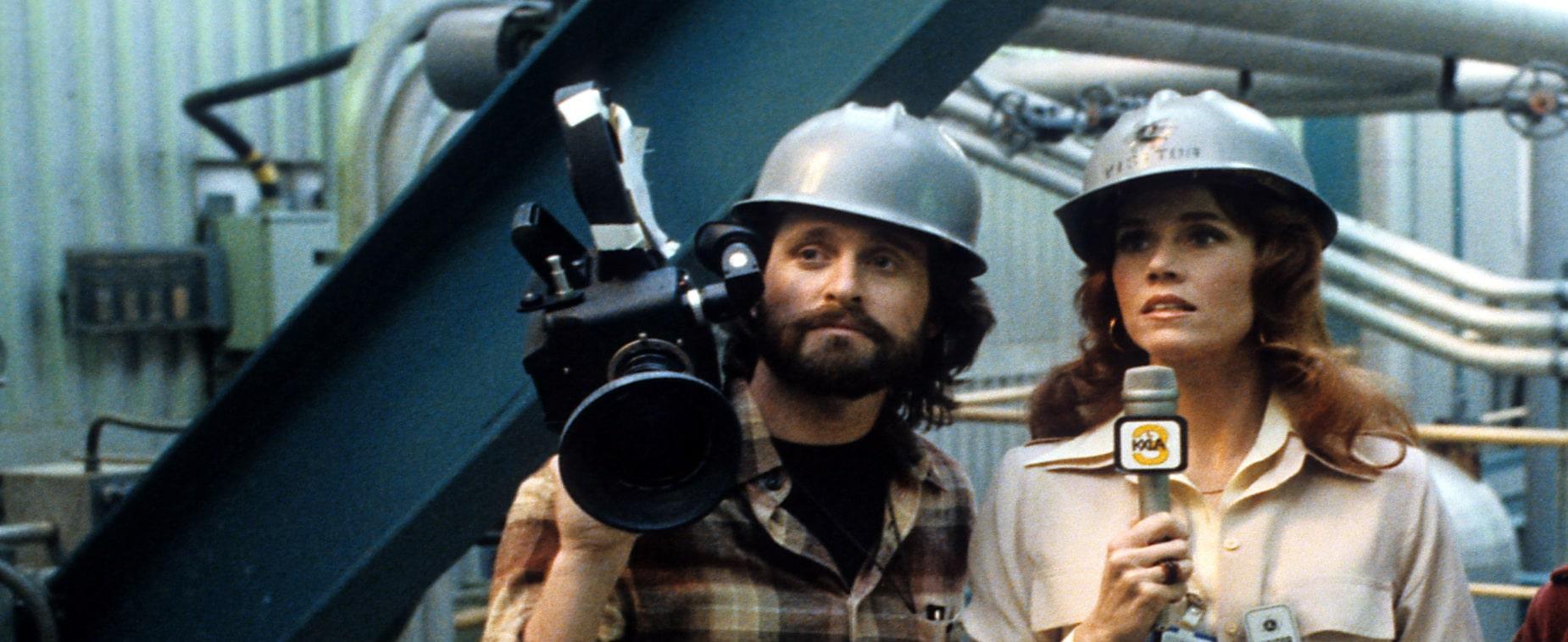I’m a boomer, straight up. Born in the middle of the Eisenhower era, I grew up during some of the most hopeful, truly and justifiably optimistic years in American history. Globally speaking, the US has been the place to be for a very long time. But in those days, there was simply nowhere else anybody with a brain and access to a TV set wanted to be. (Yes, folks, it was a “TV set.” That’s because of the large “set” of vacuum tubes in the big box behind the screen, which was itself the largest of the vacuum tubes, the cathode-ray tube, or CRT.)
I remember learning in school about the USS Nautilus, the Navy’s (and the world’s) first nuclear-powered submarine. We were told it could cruise around all of the Seven Seas on a chunk of enriched uranium the size of a lemon. I recall a cartoonish sketch of a huge car powered completely by a tiny bit of radioactive stuff in a teensy reactor stuffed under the hood. My Timex watch (analog, of course, meaning it had moving hands, not a “display”), a gift from my loving grandma, never left my wrist, even at night, when its radium-daubed radioactive pointers kept me glowingly informed of the time.

We were taught about the “ages” of human history: the Stone Age, the Iron Age, the Bronze Age, etc. Along with the still-common fire drills, there were occasional “duck and cover” Civil Defense drills to remind us that we were most definitely in the new Atomic Age. But even as we huddled under our desks or along the hallway walls during the drills, we knew that the atomic power that (we were told) had brought Imperial Japan to its knees fifteen or twenty years ago was going to light our bright future.
There were bumps in the road. I recall following the daily reports on radio and TV about the fate of USS Thresher, a first-of-its-class US Navy nuclear attack sub that vanished on its maiden open-water deep-dive deployment in April 1963. The boat became the first nuclear-powered submarine lost at sea, though the accident has never been attributed to any issue related to its atomic power plant. The Navy and the nation mourned the loss of 129 good men when that sub perished.
Still, Reddy Kilowatt was everybody’s relentlessly energetic hero, and the future belonged to those who embraced plentiful, cheap electricity as their exclusive source of energy. Electric utilities, in conjunction with residential construction companies and realtors, evolved the “Gold Medallion Electric Home” concept, which included awards given exclusively to houses that were, in the term of the day, “all-electric.” It was quite literally another way of saying modern. We were encouraged at every commercial break to “Live Better Electrically.”

Our shining future was built on the budding reality of the day – inexpensive, abundant electricity. And indeed, that future has proved to rest on plentiful, cheap energy. Much of it was provided at the time mostly by burning coal, but foreseen with the characteristic optimism of the time to be linked to atomic fission, the splitting of the elemental particle.
In the final analysis, there is little difference between the grand design of Hyman Rickover's nuclear navy and its natural transference to commercial electric generation. Nuclear power has always offered the allure of almost fantastic amounts of energy provided on a dependable, predictable basis, from a plant constructed on a remarkably small footprint (e.g. within the confines of a submarine) at an economical cost, using an unbelievably small amount of enriched radioactive “fuel.” No part of that essential reality has changed in the ensuing years.
Of course, the adoption of nuclear technology to commercial energy production has also had its difficulties. But if we consider only the technical failures, they have been remarkably small in number and, except for one, minor in impact.
Commercial nukes in the US began large-scale construction in the late 1960s. Something like 95% of all the operating nuclear generating facilities currently in use in the US were commissioned in the two decades between 1970 and 1990.
From a worldwide perspective, the one and only significant nuclear accident – in terms of human casualties – in the three-quarter-century history of nuclear commercial electricity generation happened in 1986 at Chernobyl in what was then the Ukrainian Soviet Socialist Republic. The Chernobyl facility was poorly built (as was almost everything in the former USSR) using 1950s technology; its operators were poorly trained and the plant's maintenance record was dismal. The miracle of the Chernobyl debacle is that it didn't happen sooner. The failure of Unit 4 directly took the lives of 31 known victims and turned the nearby town into a forcibly abandoned wasteland. It was just one more Communist clusterfuck, but it happened to involve a nuclear reactor.
The only other “major” event that is – incorrectly – attributed to a nuclear power plant is the tsunami event that shattered the Fukushima nuclear facility in Japan in 2011. A single life has been lost to radiation-caused cancer since the event. No one in his right mind attributes the Fukushima disaster to reactor failure. Indeed, the partial reactor meltdown had nothing to do with plant system failures. Instead, it was caused by the flood-induced failures of the backup Diesel-powered generators that should have been available to help rescue the reactors. Every stage of that multi-faceted disaster was due to the magnitude of the tidal wave.
Of course, there's Three Mile Island, the nuclear accident that just happened to coincide with the release of a 1979 Hollywood film that depicted a fictional incident at a US nuclear generating facility. (“Hanoi” Jane Fonda, Michael Douglas, Jack Lemmon; really crappy movie, don’t bother.) The film release and the TMI accident were just days apart; vast numbers of astoundingly unenlightened Americans even to this day believe the movie was about the actual events at TMI. In fact, the film had been in production for months and was released nearly two weeks before the accident at TMI.
The partial meltdown of TMI Unit 2 did indeed permanently incapacitate one of the plant's reactor-powered generating units. Despite the Left-wing press poised and anxious for tales of radioactive Armageddon and massive body counts, no one was killed or even slightly injured as a result of the incident, and the failed unit was successfully contained. After a shutdown due to the failure of TMI-2, the remaining unit continued in operation until 2019, when it ended its spectacular 45-year record of dependable and economical service. Unit 1 at Three Mile Island is, in fact, one of the most successful commercial generating units of any kind ever built, surpassing its planned service life by at least five years, and achieving stellar capacity factors of well over 95% even in its final years of operation. Its lifetime capacity factor – a bit under 80% – was irreparably impacted by the failure of its twin unit, in the aftermath of which, out of caution, the utility idled Unit 1 for a considerable period. The fact that the unit was nuclear reactor-based would seem to be its only drawback in the eyes of its detractors.
After about 1990, development and construction of nuclear power plants in the US declined. Actually, it nearly stopped altogether. Various sources blame the abrupt drop-off on a slowdown in the demand for electricity. But industry data demonstrate that this explanation is a lie. Electricity demand in the US continued to accelerate apace until well into the 21st century.
What happened in fact was the intentional strangling of nuclear power. It took a generation beyond the hippie days of the late 1960s for the vast administrative agencies in the federal government to grow and mature to the point of being able to accomplish this.
The revolting miasma of the befogged 1970s was the vast petri dish in which monsters like the US Environmental Protection Agency (USEPA, 1970), the Nuclear Regulatory Commission (NRC, 1974), and the Department of Energy (DOE, 1977) were spawned. Among these, the USEPA was from the start (and still is) populated by Leftist bureaucrats who take a dim view of human progress as most of us would define it.
The NRC replaced the old Atomic Energy Commission. The positive became the negative. Take a moment to consider the difference in even the names of these arms of the federal government. The AEC was actually about atomic energy. The NRC has been from its outset about regulating nuclear facilities. In practice, in fact, and in result, the NRC has cooperated with USEPA, DOE, and other national-level agencies, along with a host of NGOs, to essentially kill nuclear power in the US. The post-1990 dearth of nuclear development in America is the direct result of incredibly costly, project-strangling regulation.
In reaction to the protests of a tiny minority of its population, the United States is purposely, literally, systematically regulating itself right out of the nuke business. If you have any doubts as to where this road leads, take a look at Germany, the poster child for current “green” thinking.
Nuclear detractors claim that nukes aren’t being built because the energy they produce is too costly. This claim is as disingenuous as it is misleading. In fact, they’re not being built because the cost of complying with the demands of nuclear’s detractors themselves, backed by the American federal leviathan, is so high that it overshadows the obvious economy of atomic power.
Claiming that nuclear is too expensive is like saying, “Gee, you can’t walk worth a damn since I broke both your legs.”
The current fad of “green” power like wind and solar is being underpinned by massive investments of tax monies by governments worldwide. The market is so muddled and distorted by these multi-layered forced subsidies that a true assessment of actual energy cost is difficult to come by. In addition, most published assessments of per/KwH cost include no consideration that neither solar nor wind is a viable “stand-alone” source of dependable production. In fact, the astronomical cost of making wind or solar into independent energy sources is a subject utterly verboten in the media. The very nature of the modern electric grid serves to hide the glaring shortcomings of so-called “green” energy.
Within the backdrop of modern Western society, energy sources are expected to be available at a moment’s notice essentially 100% of the time. That is, when you flip the switch, the lights are supposed to come on, even (or especially) at 3 a.m. The capacity factor I mentioned earlier is a direct measurement of precisely that – how well a given source performs in terms of whether its benefit (its generating capacity) is instantly available. A 100% capacity factor (CF) would indicate that an energy source is always on at full capacity, never down. A 0% CF would mean that it’s down all the time and never available.
In the real world, most of the facilities we have traditionally built to provide electricity are capable of remarkably high CF’s, in the range of 75%-95%, with almost all of the down time due to scheduled maintenance, so-called “outage” work. Such predictable pauses in production can be overcome or accommodated by operating two or more high-CF units in a coordinated fashion, so that when one must be stopped for refitting, lubrication, etc. the other can dependably take its place. (This is called “marginal overbuilding.”) Every American electric utility, without exception, follows some form of this model.
By contrast, wind and solar share a common fatal flaw – a miserably low capacity factor of around 30%. While solar’s CF is predictably low, since the sun doesn’t shine at night, wind’s CF is completely unpredictable and uncontrollable, since output can vary or completely vanish from one minute or hour to the next. Compare these facts with the aforementioned TMI-1, and its utterly dependable CF of over 95% even when approaching the end of its planned service life.
From a practical standpoint, there is no degree of overbuilding or redundancy that can compensate for this shortcoming. In the case of solar, it’s dark outside from the Atlantic to the Pacific for at least 8-9 hours (on average, depending on the time of year) every single night. In the case of wind, doldrums or lengthy periods of very light (or overly strong) wind can strike entire states or regions for days or weeks at a time, without warning and without remedy. No level of redundancy can fix this.
In the absence of the backdrop of traditional central generating facilities, “green” energy can only serve as primary energy if it is vastly overbuilt AND is provided with energy storage capabilities on a scale never seen or even imagined before. Current technology provides just one option for such storage – rechargeable batteries. Billions, even trillions of batteries, all housed in climate-controlled weatherproof buildings, and constantly serviced by thousands or millions of acolytes.
It is only by ignoring (or neglecting to mention) the costs of the intentionally ruinous regulation of nuclear power and the potential storage costs of trying to make “green” energy a viable primary source that proponents of wind and solar can even pretend to make a case for an economic advantage.
The flouncing clowns who are trying to sell me their sun and wind power have worn out their welcome. I want my Reddy Kilowatt back.






